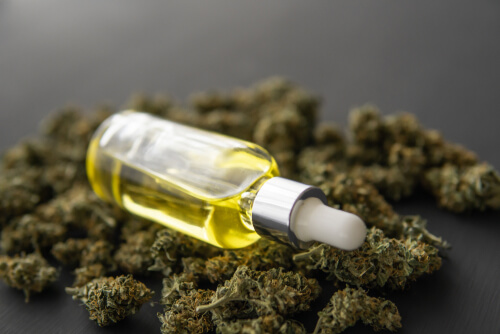
The all too famous, CBD or cannabidiol is making its rounds all over the globe as a potential alternative to the over-the-counter prescription medication. It has the spotlight trained over it, as it has generated significant interest amongst the scientific community. The questions about how CBD truly manages to do what it does has got questions pouring in from all directions. There are plenty of theories on how it all ties in together, but science still has a long way to go to uncover what it is that this humble herbal extract hides. However, there is plenty that we do know…
The therapeutic effects of CBD products are a result of it being a pleiotropic drug- a drug that produces its effects through multiple molecular pathways. As to this day, we have identified close to 65 such ‘target’ pathways or sites.
What we know as of now is that CBD has an affinity towards particular receptors. These are the CB1 and CB2 receptors. Apart from this, we also know that the CBD effect acts through various receptor-independent routes, such as delaying the breakdown and uptake of endogenous transmitters like anandamide and even increase the binding strength of certain G-proteins to receptors. Of the several receptors that CBD exacts its effects, here are some of the few notable mentions:
Vanilloid Receptors
CBD interacts with various ion channel receptors to exact its therapeutic benefits. One of the receptors that CBD bind with is the TRPV1 receptor, which is a receptor known to control pain, temperature, and sensitivity to pain. TRPV or transient receptor potential cation belonging to channel subfamily V is one of the several such TRP receptors.
These are also called vanilloid receptors – a name derived from the vanilla bean that contains an essential oil called eugenol, which helps act as an analgesic and an antiseptic.
The bliss molecule called anandamide which causes emotions of happiness and satisfaction is also an example of a TRPV1 agonist.
Serotonin
Many of you may know about this particular neurotransmitter. There is sufficient evidence that ties in CBD’s interaction with the 5-HT1A (hydroxytryptamine) serotonin receptor, which leads to reduced anxiety, lowered pain perception, and increased appetite among others.
5-HT1A is activated by the neurotransmitter serotonin, which is present in the peripheral and the central nervous system. The predecessor to CBD, which is CBDA, has a strong affinity to the 5-HT1A receptor, more than CBD.
Orphan Receptors
CBD has been noted to block the G protein-receptor called GPR55, which has been named as the orphan receptor. The reason for this is because scientists are still unsure as to what family of receptors it is that this receptor belongs to. Some of the functions of GPR55 include modulating bone density and blood pressure, among many other processes. GPR55 helps in bone reabsorption, which is promoted by osteoclast cell function. There have been links to an overactive GPR55 receptor with osteoporosis. This means that the ingestion of CBD can help in blocking GPR55 receptors and help in lowering bone reabsorption.
CBD Can Act As An Allosteric Modulator
This is a property by which it can enhance or reduce the transmission of signals by the receptors by changing their dimensions. The role of CBD as a positive allosteric modulator for the GABA-A receptors is well known. What this means is that CBD interacts with the GABA-A receptor to enhance the affinity it has towards the principal endogenous agonist – Gamma Amino Butyric Acid (GABA).
To be specific, this is a significant repressive neurotransmitter contained in the central nervous system of mammals. CBD helps in reducing anxiety by altering the shape of the GABA-A receptor, in such a way so that it can enhance the calming effects of GABA even further. The researchers have also noted the presence of a negative allosteric modulator of the CB1 receptor found in the central nervous system.
CBD doesn’t directly bind with the receptor, and this is how it can be differentiated from THC. CBD interacts with the receptor allosterically. In other words, it changes the shape of the CB1 receptor which in turn reduces its ability to bind to THC. CBD usage can help in reducing the psychoactivity of THC, by lowering the ability to bond well with the receptors.
The Key Takeaways
The variety of effects and health benefits of CBD is exacted onto users through its interaction with several key receptors and target sites in the central and peripheral nervous system. Much of the science behind it is yet to be completely uncovered, and scientists are hot on its trail.
Decoding what happens backstage can help in synthesizing CBD strains that work towards specific issues and can mean an end to the conventional over-the-counter prescription drugs. CBD has the potential to shape the pharmaceutical landscape and the secrets it holds can mean the end to diseases that have been plaguing mankind for ages. All we can do is wait and watch…

